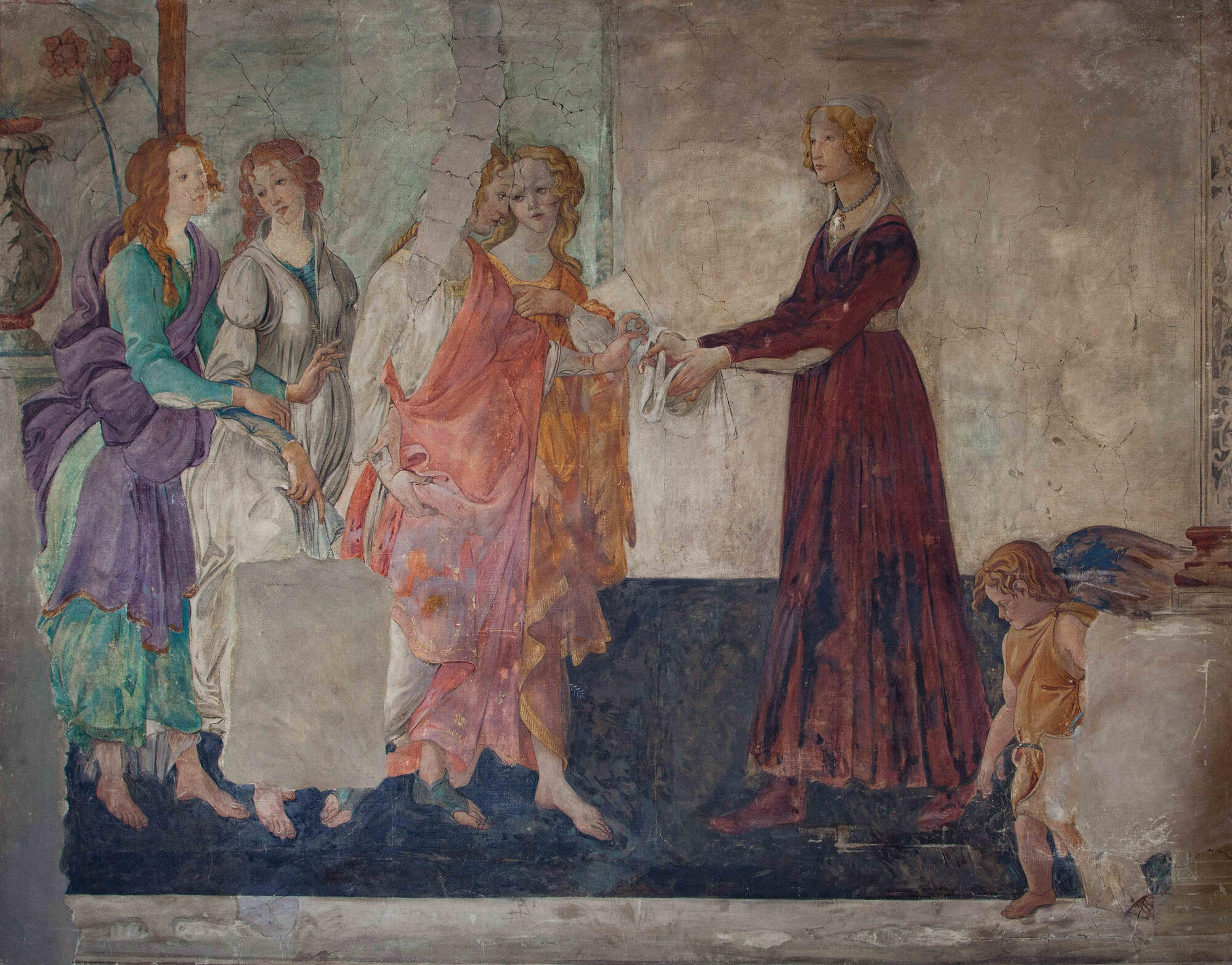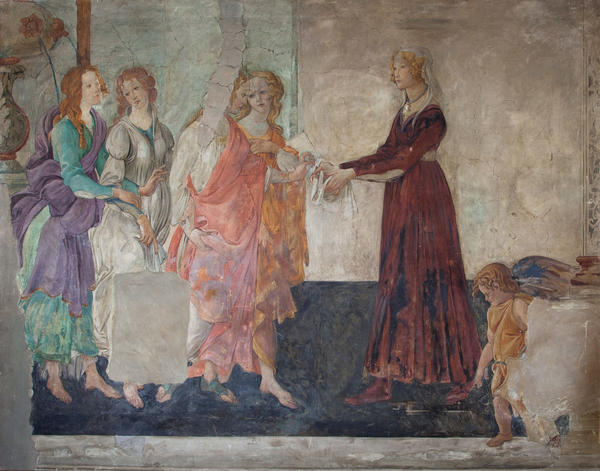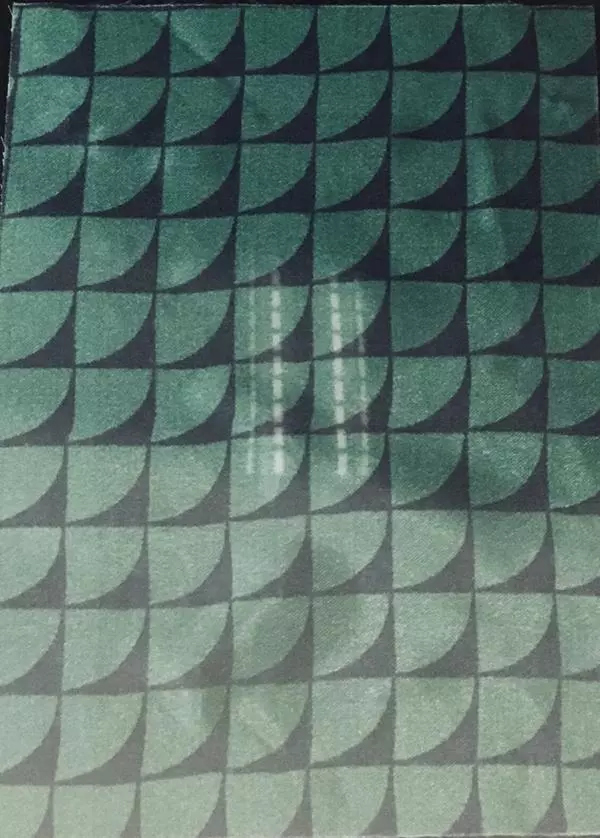The painting “Venus and the Three Graces Presenting Gifts to a Young Woman” by Lyubov Popova occupies a special place in Nikolai Golovanov’s collection. The conductor acquired the work from the Rumyantsev Museum, which received it from the painter herself.
Lyubov Sergeyevna Popova (1889–1924) was a Russian and Soviet artist and one of the pioneers of Russian avant-garde. Since 1912, Lyubov Popova was fond of the innovative ideas of Picasso, Braque and Matisse and gravitated toward Suprematism, Cubo-Futurism and Constructivism. But before finding her place among the followers of the new art movements, she had been actively searching for her own artistic language. Her path to becoming a painter involved studying at the school of the artist, scene painter and art theorist Konstantin Yuon, visiting the free collective art studios “Bashnya”, developing a penchant for ancient Russian painting, and studying the Italian Renaissance. In 1910, Popova went to study in Italy, and in 1912 she examined the works of Le Fauconnier and Jean Metzinger in Paris. In 1921, the artist took part in the exhibition “5×5=25”. Impressed by the results, Vsevolod Meyerhold invited Popova to work in the theater.
The displayed painting is a copy of the fresco “Vénus et les Trois Grâces offrant des présents à une jeune fille” (Venus and the Three Graces Presenting Gifts to a Young Woman) by Sandro Botticelli, housed in the Louvre in Paris. The Renaissance genius created the original piece around 1484. It decorated the walls of Villa Macerelli near Florence and was presumably owned by the Tornabuoni family. Botticelli’s frescoes are all unchallenged masterpieces: the vibrant postures, long soft figures that barely touch the ground, and subtle color nuances make the work harmonious, refined and timeless.
Lyubov Popova managed to convey the mood inherent in the works of Botticelli. Even though the work was painted on a canvas using mixed media, the artist skillfully imitated the matte surface, that is characteristic of frescoes, and the subtle coloring of the form modeling, as well as created the illusion of a tempera paint layer and craquelure that are present in the original work from the Louvre.
Lyubov Sergeyevna Popova (1889–1924) was a Russian and Soviet artist and one of the pioneers of Russian avant-garde. Since 1912, Lyubov Popova was fond of the innovative ideas of Picasso, Braque and Matisse and gravitated toward Suprematism, Cubo-Futurism and Constructivism. But before finding her place among the followers of the new art movements, she had been actively searching for her own artistic language. Her path to becoming a painter involved studying at the school of the artist, scene painter and art theorist Konstantin Yuon, visiting the free collective art studios “Bashnya”, developing a penchant for ancient Russian painting, and studying the Italian Renaissance. In 1910, Popova went to study in Italy, and in 1912 she examined the works of Le Fauconnier and Jean Metzinger in Paris. In 1921, the artist took part in the exhibition “5×5=25”. Impressed by the results, Vsevolod Meyerhold invited Popova to work in the theater.
The displayed painting is a copy of the fresco “Vénus et les Trois Grâces offrant des présents à une jeune fille” (Venus and the Three Graces Presenting Gifts to a Young Woman) by Sandro Botticelli, housed in the Louvre in Paris. The Renaissance genius created the original piece around 1484. It decorated the walls of Villa Macerelli near Florence and was presumably owned by the Tornabuoni family. Botticelli’s frescoes are all unchallenged masterpieces: the vibrant postures, long soft figures that barely touch the ground, and subtle color nuances make the work harmonious, refined and timeless.
Lyubov Popova managed to convey the mood inherent in the works of Botticelli. Even though the work was painted on a canvas using mixed media, the artist skillfully imitated the matte surface, that is characteristic of frescoes, and the subtle coloring of the form modeling, as well as created the illusion of a tempera paint layer and craquelure that are present in the original work from the Louvre.




